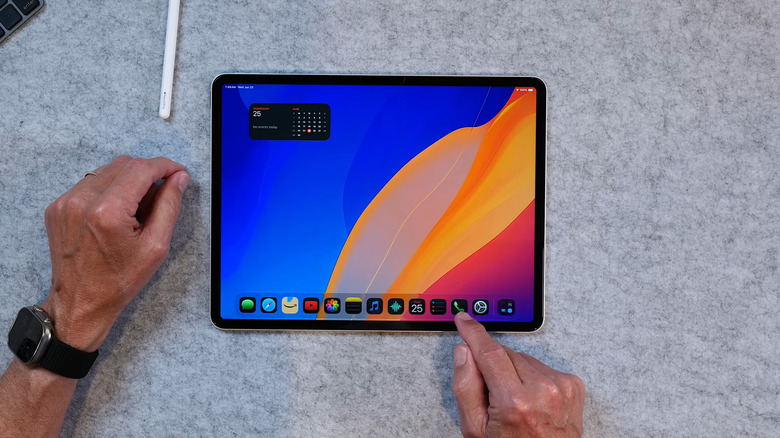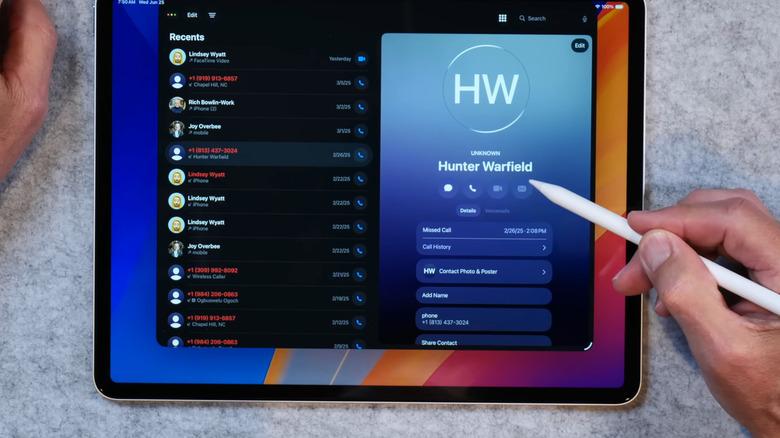Noticed The New Phone App On Your iPad? Here's What It's For
With iPadOS 26, Apple added a dedicated Phone app to the iPad for the first time. It doesn't turn the tablet into a standalone phone, but it gives you access to your iPhone's line through Continuity. When you make or answer a call on an iPad, it actually connects through the iPhone that's signed in with the same Apple ID. The iPad shows a complete call interface on its larger display, giving you access to Recents, Contacts, the Keypad, Voicemail, and Apple's latest calling features. Audio plays through the iPad's speakers or connected headphones, and you can swap to AirPods or other Bluetooth devices during a call.
The new feature eliminates the need to use FaceTime Audio for everyday calls and prevents you from needing to return to your iPhone when it rings. Your iPad can function as a remote for your number when it stays near your iPhone, connected to Wi-Fi, and shares the same account credentials. The updated design of the app also makes the most of the iPad screen real estate.
It's important to understand what this update does not do. The iPad still lacks native carrier voice service, even on cellular models. You should have known this before buying it. If your iPhone is off, out of range, or has no service, the Phone app on iPad won't connect. Think of it as a way to extend your iPhone's calling abilities across devices, not as a replacement for a phone line.
How to set it up and why you might use it
Before the Phone app works on iPad, a few requirements need to be met. Your iPad and iPhone must be on iPad/iOS 26. If you can't update, here's the most likely reason why. Next up, both devices need to use the same Apple ID. Wi-Fi and Bluetooth should be enabled on each. On the iPhone, go to Settings > Phone > Calls on Other Devices and switch on Allow Calls on Other Devices, then toggle your iPad in the list. Once set, incoming calls ring on both devices, and you can place outgoing calls directly from the iPad app.
The app mirrors the core iPhone experience. You can dial from the Keypad, call contacts, view call history, and access voicemail with transcripts. New features like Call Screening, Hold Assist, and Live Translation are also available, making the iPad version just as capable as the iPhone's.
The use cases are straightforward. If your iPhone is charging in another room, you can answer calls on the iPad without having to move. If you work at a desk, the larger layout is better for speakerphone and multitasking. Voicemail management is simpler on the bigger screen, and switching audio between devices is seamless.
There are still limits. Emergency calls should be made directly from an iPhone, since the iPad only relays through it. Carrier-specific features like Wi-Fi Calling depend on the iPhone's line. If multiple devices are signed in, they can all ring simultaneously, although you can toggle this off. For most people, the Phone app makes the iPad a more useful communication hub, even if it's not a standalone phone.

